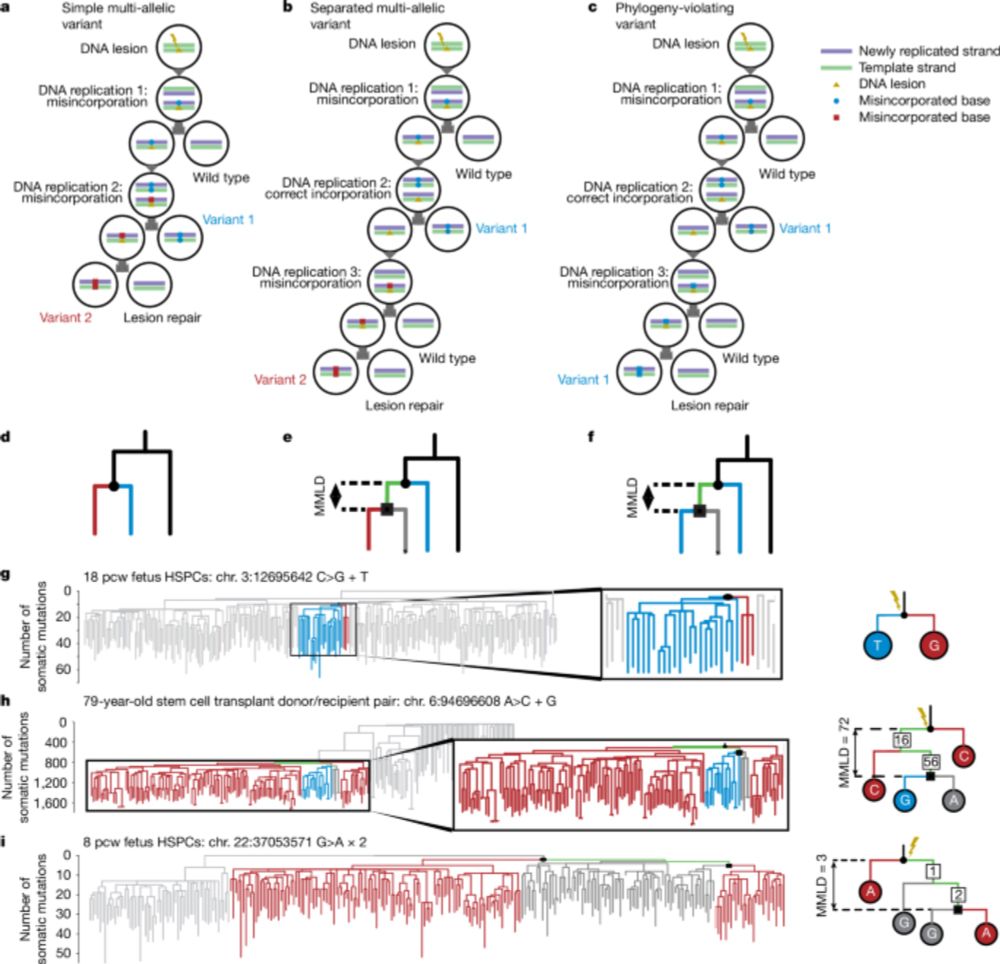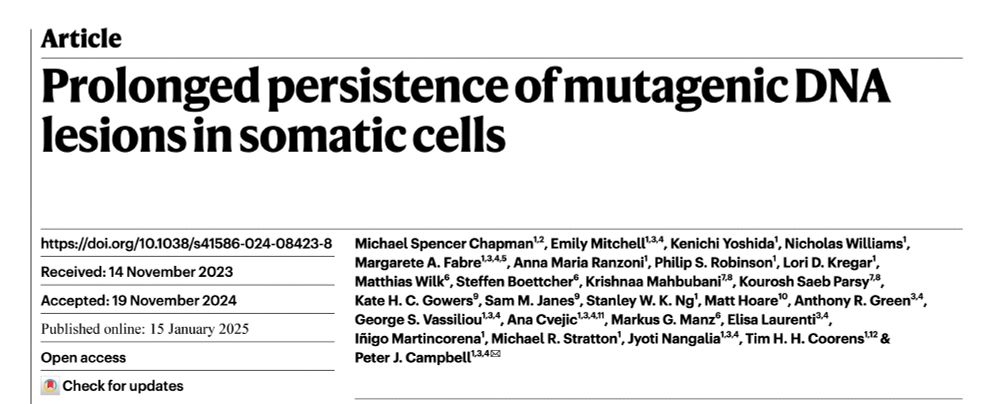Mike Spencer Chapman
@mikespencerchapman.bsky.social
210 followers
180 following
23 posts
Haematology doctor & researcher, UK. Interested in blood ageing, transplant, cancer and development. Lapsed musician.
Posts
Media
Videos
Starter Packs
Pinned
Reposted by Mike Spencer Chapman
Reposted by Mike Spencer Chapman
Reposted by Mike Spencer Chapman
Reposted by Mike Spencer Chapman
Sarah Aitken
@s-j-aitken.bsky.social
· Jan 15

Genetic background sets the trajectory of cancer evolution
Human cancers are heterogeneous. Their genomes evolve from genetically diverse germlines in complex and dynamic environments, including exposure to potential carcinogens. This heterogeneity of humans,...
www.biorxiv.org
Reposted by Mike Spencer Chapman
Reposted by Mike Spencer Chapman
Trevor Graham
@trevorgraham.bsky.social
· Jan 15
Sarah Aitken
@s-j-aitken.bsky.social
· Jan 15

Prolonged persistence of mutagenic DNA lesions in somatic cells - Nature
Persistent DNA lesions can occur throughout the human lifespan and can remain in the genome of affected cells for several years and generate a substantial proportion of the mutational burden.
www.nature.com











